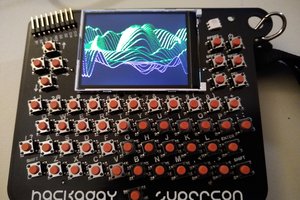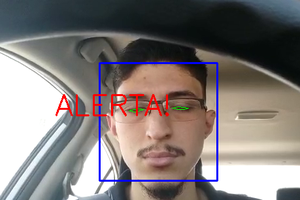Programming model for Surfaces
The method used here is to package each geometric primitive (e.g. sphere) as
a Matlab 'struct'. Geometric primitives are then grouped in a 'cell array'.
The cell array is ultimately passed to the renderpatch function
for conversion to a shaded polygon image or the renderwire function
for conversion to a wireframe image.
Each geometric primitive struct may have several data fields. Each struct must
have a faces field and a vertices field in order to
be rendered. The vertices field of N vertices must be an Nx3 array.
The faces field of M faces must be an Mxf array, where f would be 3 for a triangle
list and 4 for a rectangle list. For example a struct called cube
could be defined as:
cube.vertices=[ 0 0 0; 1 0 0; 1 1 0; 0 1 0; ...
0 0 1; 1 0 1; 1 1 1; 0 1 1;];
cube.faces=[ 1 2 6 5; 2 3 7 6; 3 4 8 7; ...
4 1 5 8; 1 2 3 4; 5 6 7 8; ] ; Of course, it would be tedious to have to figure out the faces for spheres and other objects, so a set of prototype objects is included below.
There are several optional fields which can be defined. The field names are
case-sensitive and must be all lower-case. If you do not specify a field value,
its default value is used. All fields can be used with the renderpatch
function. Only facecolor, edgecolor and visible may be used with renderwire.
In addition, renderwire maps the facecolor to the edgecolor.
- facecolor: Can take the values
- 'none' which makes the faces invisible
- a color string e.g. 'white'
- a 3-vector [red, green, blue]
- default=cyan
- edgecolor: Can take the values
- a color string e.g. 'white'
- a 3-vector [red, green, blue]
- default='none' which makes the edges invisible
- ambientstrength: The non-directional light reflectance. Range=0 to 1, default=.6
- specularstrength: The specular highlight reflectance. Range=0 to 1, default=.2
- specularexponent: The specular highlight size. Range=1 to 1000, default=10
- diffusestrength: The directional light reflectance. Range=0 to 1, default=.5
- facelighting: Can take the values
- 'none' which means that lighting computations are not done.
- 'flat' which means that each polygon has one color.
- 'gouraud' which means that each polygon has interpolated colors.
- default='phong' which means that each polygon has interpolated normals.
- visible: Can take the values
- 'off' which is invisible
- default='on'
For instance for the cube struct you might want to specify
cube.facelighting='flat'; %flat shading with no edge interp cube.facecolor=[.9,.2,.2]; %a red color
The renderers, renderpatch and renderwire expect
a cell array as a parameter. The cell array should contain all objects to be
rendered. The combine function described below concatenates objects
in the correct format for the renderers. See the example code below for specific
use.
The Matlab Code for Surfaces
The code is packaged as several Matlab functions so that is can be used in a natural fashion. The Matlab 'help' function will return information on each function.
- renderpatch
count=renderpatch(scene);- Converts a cell array or struct to an shaded polygon image.
- returns a count of the number of structs actually rendered.
- renderwire
count=renderwire(scene);- Converts a cell array or struct to an wireframe image.
- returns a count of the number of structs actually rendered.
- combine
newobject=combine(obj1, obj2 , ...);- Several objects may be combined into one composite object
- scale
scaledobj=scale(obj,xscale,yscale,zscale);- Input paramenters are an object and the scale along each of 3 axes.
- translate
movedobj=translate(obj,x,y,z);- Input paramenters are an object and the distance to move along each of 3 axes.
- rotateX
rotatedobj=rotateX(obj,angle);- angle is rotation in degrees around the x axis.
- rotateY
rotatedobj=rotateY(obj,angle);- angle is rotation in degrees around the y axis.
- rotateZ
rotatedobj=rotateZ(obj,angle);- angle is rotation in degrees around the z axis.
- UnitSphere:
sphere1=UnitSphere(3);- Input parameter is a measure of the output sphere...
 Bruce Land
Bruce Land
 rawe
rawe
 Ted Yapo
Ted Yapo

 Jazmín Peña
Jazmín Peña